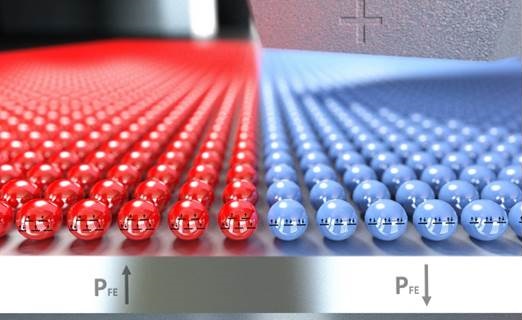Spin crossover molecules form a vast class of materials for which the magnetic structure can be altered at the atomic level by an external stimulus. Diamagnetic low spin to paramagnetic high spin transitions can be induced by pressure, temperature, illumination with light, or magnetic pulses. Nebraska MRSEC researchers have shown for the first time that ferroelectric polarization can be used to stabilize spin cross-over molecules in either the high spin state or the low spin state over a wide temperature range including room temperature [Chemical Communications 50, 2255 (2014)]. Using a molecular thin film of [Fe(H2B(pz)2)2(bipy)] adsorbed on an organic ferroelectric (polyvinylidene fluoride with trifluoroethylene) substrate they showed that the polarization of the organic ferroelectric mediates the spin state of the cross-over system. The possibility to induce a spin crossover transition by electric fields could lead to heteromolecular magneto-electric systems where the magnetic properties of the molecular overlayer are altered by an applied electric field. This is very important because molecular systems are among the very few systems that could potentially deliver low power GHz nonvolatile magneto-electric logic operations.

The ferroelectric polarization of an organic ferroelectric (polyvinylidene fluoride with trifluoroethylene) substrate mediates the spin state of an adsorbed spin cross-over molecular thin film [Fe(H2B(pz)2)2(bipy)].